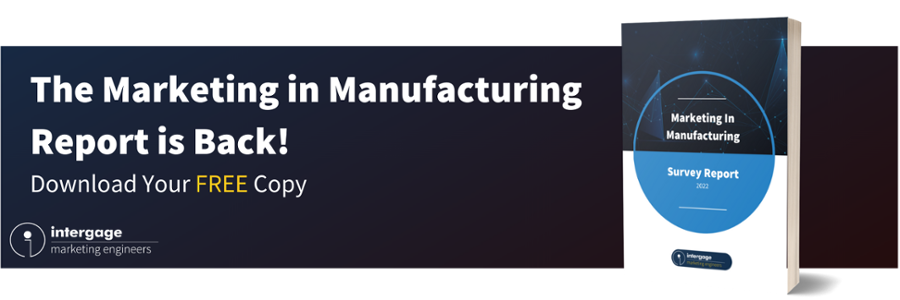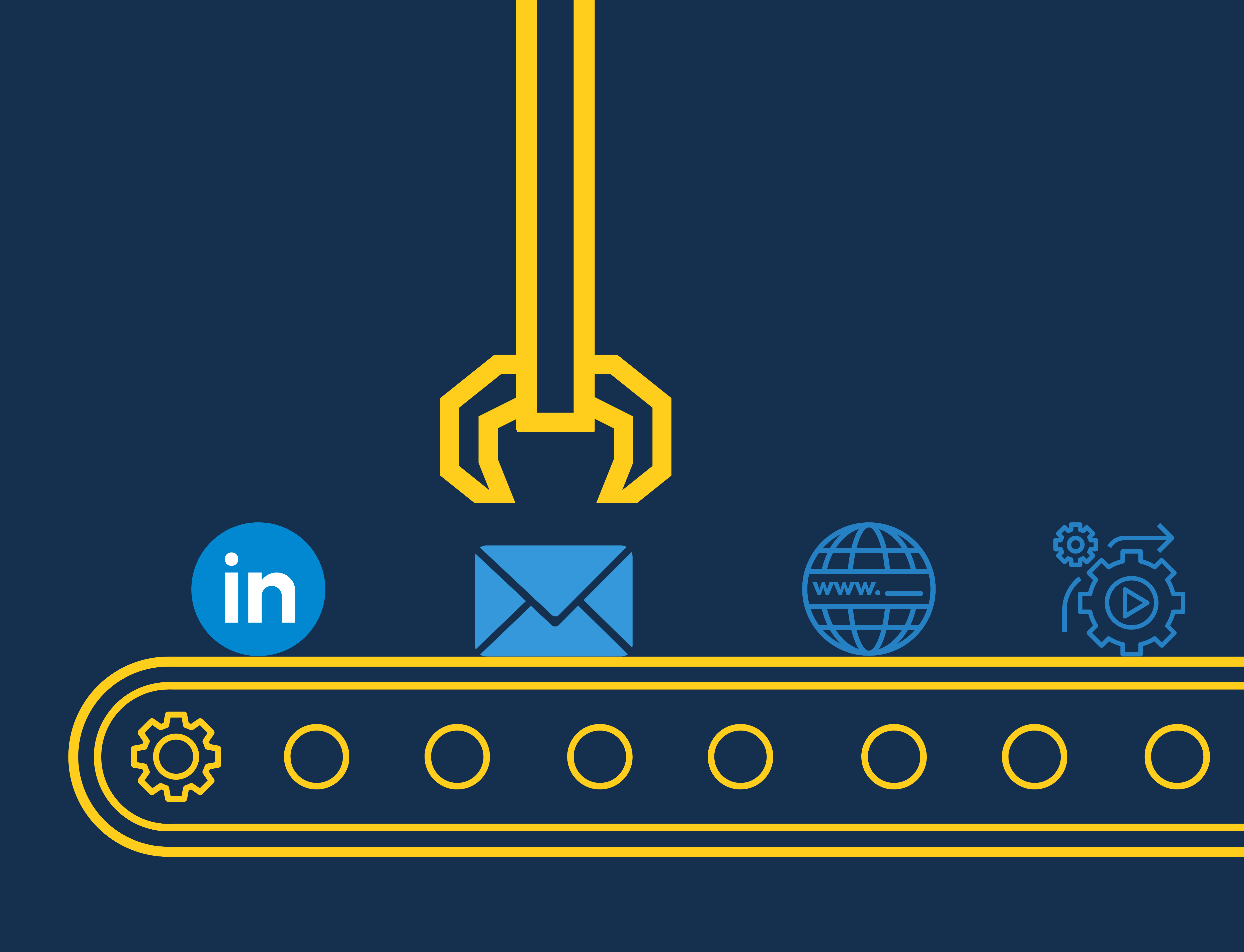Key Digital Marketing Stats Your Manufacturing Business Should Measure
It can be difficult to know exactly which marketing stats and KPIs you should focus on to ensure success. That is particularly true when it comes to engineering and manufacturing businesses who typically rely on more traditional marketing techniques such as events and have longer buying cycles than most.
How Many Visitors? Are They Buying?
At a very basic level, digital marketing comes down to three essential questions:
- how many users are visiting your website?
- how many of them turn into real business?
- how much are they spending?
Sooner or later, most other questions will circle back to that trinity. But you’ll need to delve into much more detail when you examine your web stats. Your marketing will get expensive if you don’t.
Conversion Rates Are Crucial
By far the biggest gap for many marketers is their conversion rate. Or rather, their conversion rates – plural.
Sure, they see the conversion rate in their digital advertising. But often that’s as far as it goes.
They fail to ask:
- What are the click-to-lead conversion rates for organic, direct, referral, social and email sessions/visits too?
- What are the lead-to-opportunity conversion rates?
- What are the opportunity-to-customer conversion rates?
- Which channels have the best/worst conversion rates? Where should I double down? Where should I reduce marketing investment?
- Which campaigns have the best conversion rates? Which are worth repeating and honing? Which failed to meet expectations (and why)?
Ultimately, your marketing budget will be based on your:
- average number of monthly leads
- leads-to-opportunity conversion rate
- opportunity-to-customer conversion rate
- average sale value
- average customer lifetime value.
It should not be difficult to measure. Various digital tools or even a simple spreadsheet will do the job.
And from there you can measure return on investment (ROI) based on e-commerce sales and/or enquiries for each channel and campaign.
Let’s break it down and look at it step-by-step in the traditional marketing funnel…
Your Marketing Funnel (And How It Relates To Your Customers)
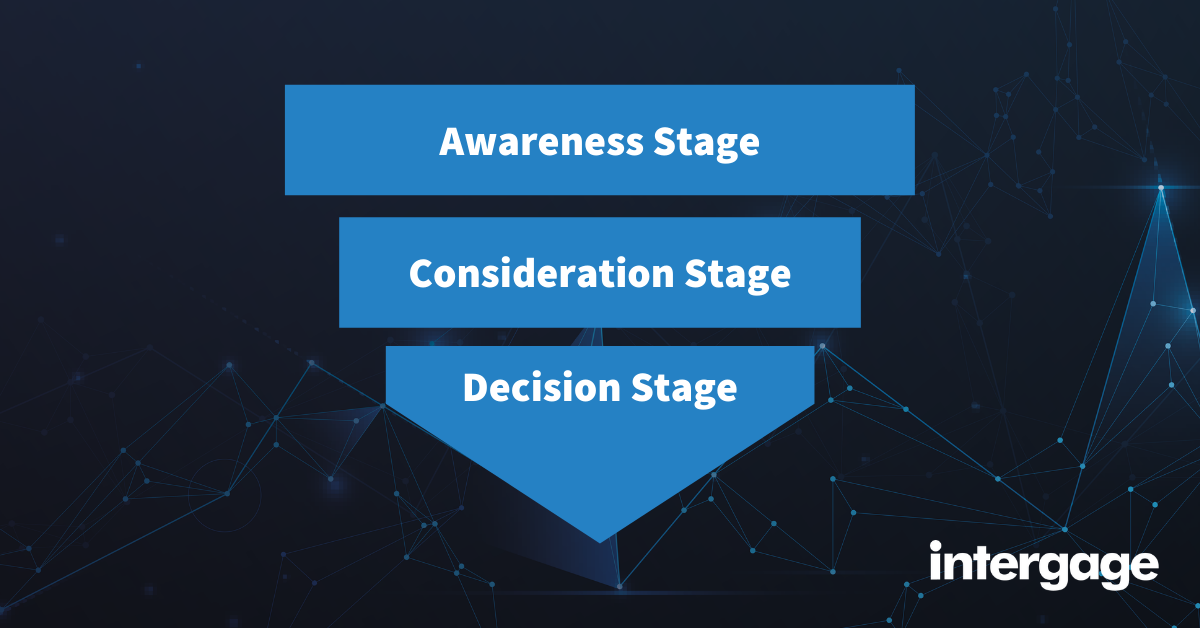
Here is the marketing funnel with the three stages of the buyer’s journey (Awareness, Consideration, Decision)…
- Top Of Funnel (TOFU) – the Awareness Stage (Pain/Problem Aware: “I have a problem…”)
- Prospect/Visitor
- Lead - Middle Of Funnel (MOFU) – the Consideration Stage (Solution Aware: “I now know what’s causing the problem…I’m thinking about the best way to fix it.”
- Marketing Qualified Lead (MQL)
- Sales Qualified Lead (SQL) - Bottom Of Funnel (BOFU) – the Decision Stage (“I’ve settled on my preferred solution…and I’m looking for a provider.”
- Opportunity
- Customer
Let’s look at the metrics you need to monitor and record for each stage…
Top Of Funnel (TOFU): Awareness Stage – “I Have A Problem. What’s Causing It?”
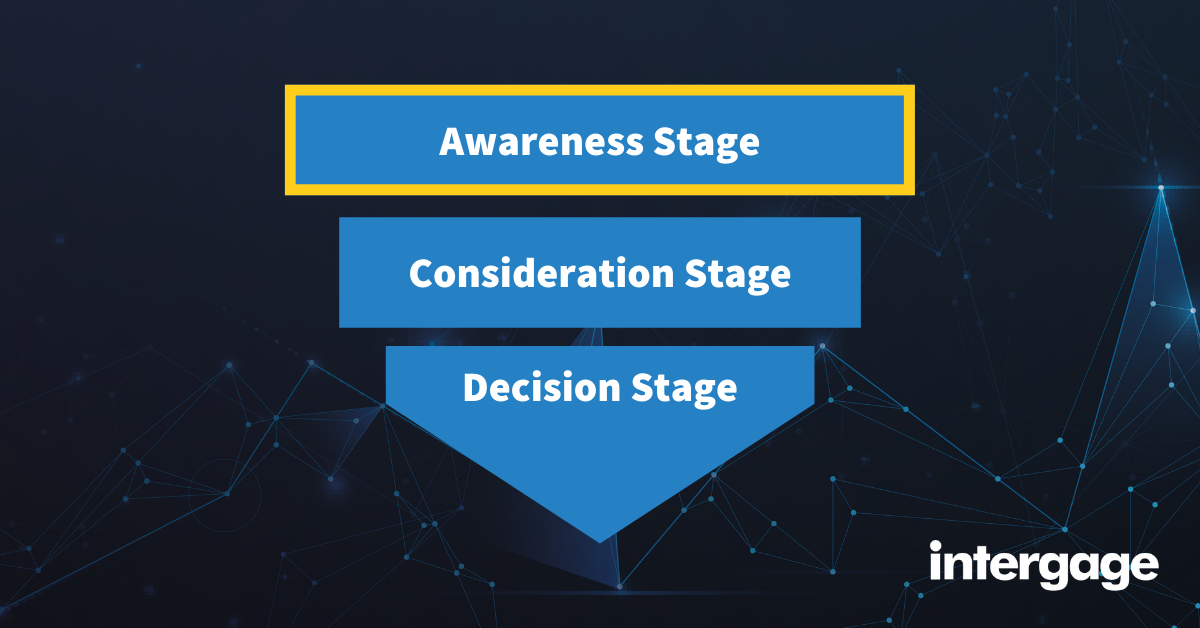
People who’ve just become aware of a problem are in heavy research mode. They’re looking for answers – fast. They want to see unselfish content that isn’t a sales pitch. They want content that’ll help them to diagnose their problem.
That content could be blog posts, social media posts, white papers, checklists, ‘how to’ videos, tools or kits, ebooks, tip sheets or educational webinars.
You need to monitor the web traffic that all this content generates. And not just headline-level numbers of sessions/visits. You need to monitor engagement levels. Look at quality – not just quantity.
In this TOFU stage, you’re trying to turn casual content browsers (identity unknown) into leads; you’re trying to capture their names and email addresses.
So you need to know:
- How many of those content consumers fill in a form and become leads? How many of them cross the anonymity threshold and give you their contact details in return for valuable information about the manufacturing, engineering or technology problem they’re trying to solve?
- How much did it cost you in time and advertising costs to obtain each form fill?
- What is each of these leads worth to you in cold hard cash? Think how many leads you typically need to generate a sales meeting, how many meetings turn into real customers, how much they’ll spend over their customer lifetime. Calculate the true value of a customer and work backwards.
This is very much a marketing rather than sales stage but the two departments should always work together to ensure alignment. They need to pull together to reach the overall business goals.
Key TOFU (Awareness) stage metrics you should measure include:
- Traffic by channel
- Number of leads (form fills)
- Cost/lead by channel
- Lead conversion rates by channel.
Middle Of Funnel (MOFU): Consideration Stage – “I Know What’s Causing The Problem. How Do I Fix It?”
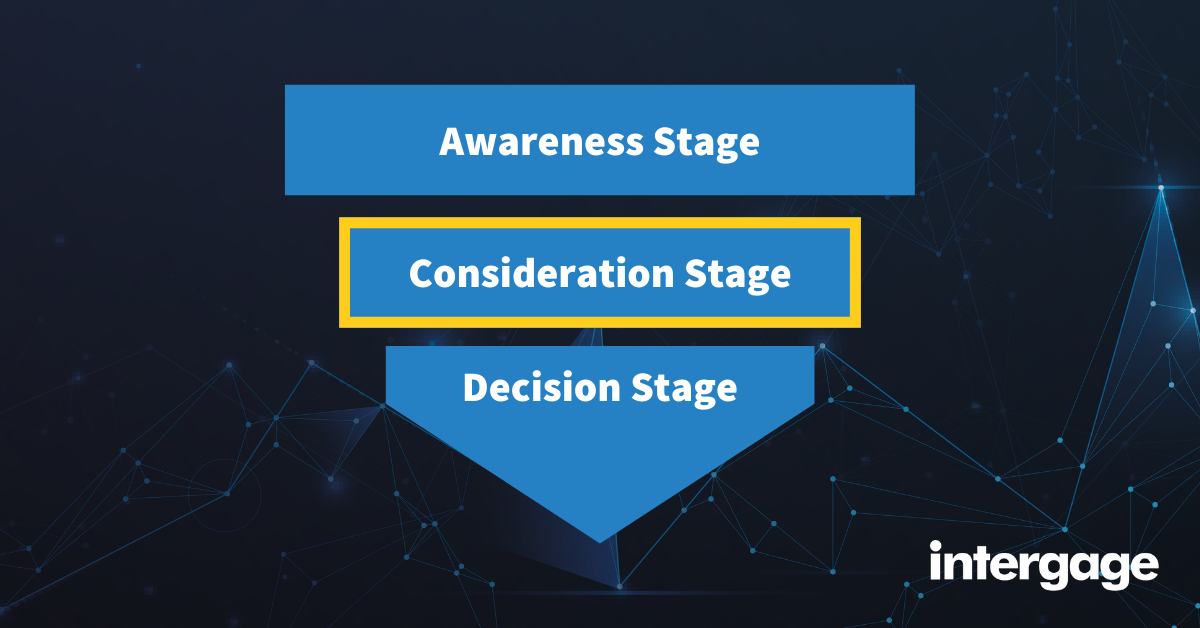
For your potential customers, this mid-funnel stage is all about options: they’re weighing up possible solutions. But they’re still far from ready to buy. They still don’t know for sure what they want…let alone who’ll provide it.
So they need lots of information that’ll help them to compare the various ways to tackle their problem. Which solution would be best for them? What are the pros and cons for each one?
They’ll still be consuming content voraciously: comparison blogs, videos and ebooks…guides, tip sheets and checklists…slideshares/PowerPoint presentations…anything that helps them decide which solution will be the smartest, most effective and best value.
At the MOFU (Consideration) stage you’re trying to sift through the leads gathered at the TOFU (Awareness) stage to decide which of them are marketing qualified leads (MQL) – ie, leads that are good enough for the marketing team to pass on to the sales team.
Your sales team then needs to sift through all these MQLs and qualify them to see which are most likely to go on to the Top of Funnel (TOFU/Decision) stage to become opportunities and then customers.
MOFU stage is where marketing and sales teams will be working particularly closely to ensure the perfect handover.
In an ideal world, every single marketing qualified lead would be perfect for the sales team. So there’d be a 100% conversion rate from MQL to SQL. Sadly, the world is far from ideal…as 2020 proved.
In terms of measurement, you’ll want to be sure that the consideration stage content you shared was doing its job in helping people along the buyer’s journey. That means measuring the traffic that it generated, the conversion rates and the cost of gaining each MQL and SQL.
Key MOFU (Consideration) stage metrics should include:
- How many leads become MQLs? (number, conversion rate)
- How much did it cost in time (£/hour) and advertising to obtain each MQL? (cost/MQL)
- How many MQLs become SQLs? (number, conversion rate)
- How much did it cost in time (£/hour) and advertising to obtain each SQL? (cost/SQL)
Bottom Of Funnel (BOFU): Decision Stage – “I Know What I Need To Fix The Problem. Who Can Help Me?”
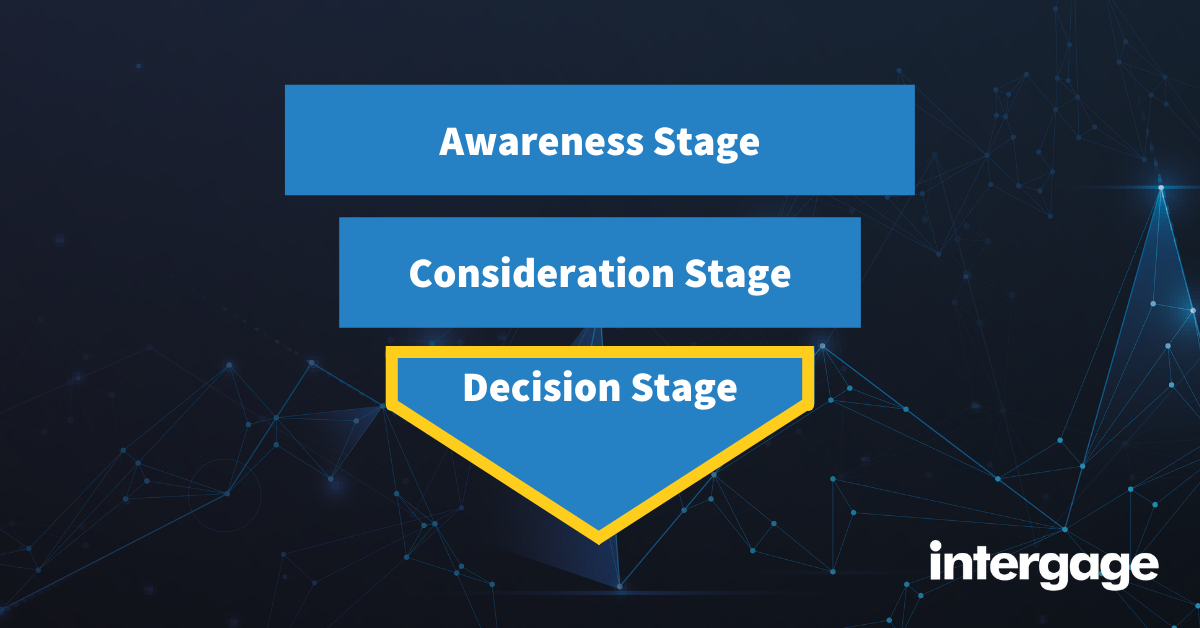
This is where it gets even more serious. At this point, every one of the people you’re talking to at the Decision stage will be an exciting sales opportunity.
Marketing and sales have qualified them as MQLs and SQLs respectively. They’re serious potential customers who know the solution they want. Now they want to nail down the fine details and find a provider who’ll do a good job at a great price.
They’re ready to buy. So don’t falter at the finish. Don’t get over-excited and lapse into pushy 20th century sales tactics. Your intended customers will still be consuming content: they’ll want to know how you helped other companies with similar problems.
They’ll want to see white papers, case studies and testimonials. They’ll want demonstrations, free trials and incentives to buy. They need to see hard facts and numbers proving how you regularly deliver solid value and ROI before they’ll sign up for your product(s) and service(s).
Again, you need to measure the impact of that BOFU (Decision stage) content: traffic numbers, conversion rates, cost per conversion.
Key BOFU (Decision) stage metrics should include:
- How many SQLs become opportunities? (number, conversion rate)
- How much did it cost in time (£/hour) and advertising to obtain each opportunity? (cost/opportunity)
- How many opportunities become customers? (number, conversion rate)
- How much did it cost in time (£/hour) and advertising to obtain each customer? (cost/customer)
- How much are those customers worth? (Lifetime value)
- How does that compare with the cost of getting their business?
- What’s the ROI for your marketing?
- What’s the ROI for your sales operation?
From Funnels To Flywheels
It doesn’t end when a customer signs on the dotted line.
In the great game of Attract-Engage-Delight, you must wow your customers and turn them into brand ambassadors who’ll recommend you to future prospects.
So the traditional marketing funnel is now a flywheel, a never-ending cycle that harnesses the energy and power of your marketing and sales. The wheel spinning faster and faster to generate more referrals and future business.
And you need to measure those referrals…
- How many referrals do you get?
- Where did they come from? (And why were you recommended?)
- How many referrals turn into real business? (What’s the rate?)
- How much are referrals worth to you in terms of new business?
- Who are your best referrers?
- How long do they remain customers?
- How long do they remain referrers?
Want to know more?
If you'd like to learn how other engineering and manufacturing businesses measure their marketing, download your free copy of the Marketing In Manufacturing Report. You'll learn:
- Which marketing activities have proven most successful
- How much other industrial businesses are investing in marketing
- Which objectives and marketing KPIs you should be monitoring.
